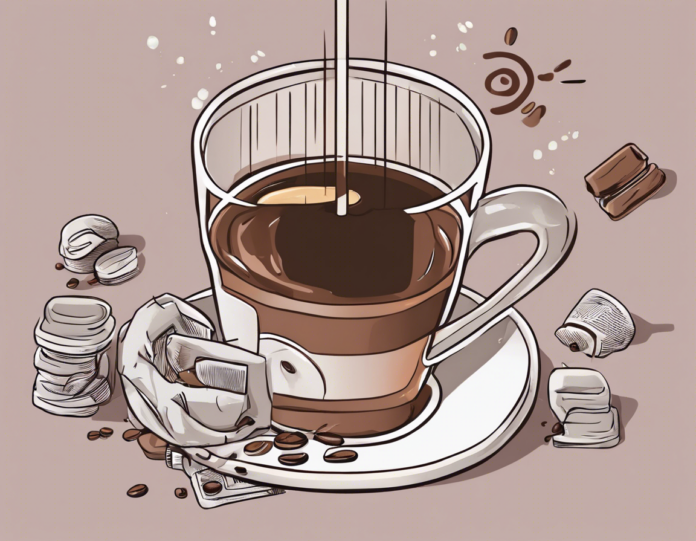As coffee enthusiasts and connoisseurs delve deeper into the world of specialty coffee, the concept of caffeine strain varieties has emerged as a topic of intrigue and interest. While most of us are familiar with the broad categories of coffee beans such as Arabica and Robusta, the nuances within these categories are vast and varied. Understanding the different caffeine strains can not only enhance your appreciation for the beverage but also help you make more informed choices when selecting your brew. In this comprehensive guide, we will unpack the complexities of caffeine strain varieties, exploring their origins, characteristics, and the impact they have on your daily cup of coffee.
The Origins of Caffeine Strain Varieties
Coffee, one of the world’s most popular beverages, is derived from the beans of the Coffea plant. The two primary species of coffee beans are Arabica and Robusta, each known for its distinctive flavor profiles and growing conditions. However, within these two broad categories lie multiple caffeine strains that contribute to the diverse array of coffees available in the market. Let’s take a closer look at some of the popular caffeine strains:
Arabica Caffeine Strains:
- Typica: Considered one of the oldest caffeine strains, Typica beans are known for their balanced flavor profile with gentle acidity and subtle sweetness. Originating from Yemen, Typica has been widely cultivated and has given rise to many other popular strains.
- Bourbon: Named after the island of Bourbon (now Réunion) where it was discovered, this strain is celebrated for its complex flavors, often featuring fruity notes and a smooth, velvety texture. Bourbon beans are favored by many specialty coffee producers for their exceptional cup quality.
Robusta Caffeine Strains:
- Culi Robusta: Hailing from Vietnam, Culi Robusta beans are characterized by their strong, bold flavor profile with earthy undertones. These beans are often used in espresso blends to add depth and crema to the brew.
- Liberica: A lesser-known caffeine strain, Liberica beans are distinctive for their large size and irregular shape. They are prized for their unique, woody flavor profile, making them a choice component in blending for added complexity.
Characteristics of Caffeine Strain Varieties
Each caffeine strain brings its own set of characteristics to the table, influencing the overall taste, aroma, and body of the coffee produced. Understanding these characteristics can help coffee enthusiasts pinpoint their flavor preferences and explore a diverse range of sensory experiences. Here are some key attributes associated with caffeine strain varieties:
Flavor Profiles:
- Arabica: Known for its nuanced flavors, Arabica beans often exhibit notes of fruits, flowers, and berries. They tend to have a smoother, more complex taste compared to Robusta beans.
- Robusta: Robusta beans are recognized for their strong, robust flavors with earthy, nutty, and sometimes bitter undertones. They contribute to the crema and caffeine content of espresso blends.
Acidity:
- Arabica: Generally higher in acidity, Arabica beans offer bright, zesty notes that add vibrancy to the cup. The acidity can vary from mild to pronounced, depending on the strain and growing conditions.
- Robusta: Robusta beans have lower acidity levels, providing a more mellow and sometimes harsher flavor profile. They are often described as bold and full-bodied.
Caffeine Content:
- Arabica: While Arabica beans contain caffeine, they have lower levels compared to Robusta beans. This makes Arabica a preferred choice for those sensitive to caffeine or seeking a milder stimulation.
- Robusta: Robusta beans are renowned for their high caffeine content, almost double that of Arabica beans. This makes them a popular choice for those looking for a strong kick of energy in their coffee.
Impact of Caffeine Strain Varieties on Coffee Quality
The choice of caffeine strain can significantly impact the overall quality of the coffee produced. Everything from flavor and aroma to body and acidity can be influenced by the specific strain of coffee bean used. Here are some ways in which caffeine strain varieties affect coffee quality:
- Flavor Complexity: Different caffeine strains bring unique flavor profiles to the table, allowing roasters to create complex and layered coffees with a range of taste notes.
- Aroma Intensity: The aroma of coffee is closely linked to the caffeine strain used, with each variety offering distinct fragrances that contribute to the sensory experience.
- Body and Mouthfeel: Caffeine strains play a role in determining the body and mouthfeel of the coffee, influencing its texture and viscosity.
- Caffeine Kick: The caffeine content of the beans affects the stimulant properties of the coffee, giving consumers options based on their desired level of energy boost.
Frequently Asked Questions (FAQs) About Caffeine Strain Varieties
-
Q: Are Arabica beans always better than Robusta beans?
A: It depends on personal taste preferences. While Arabica beans are generally considered higher in quality, some coffee drinkers prefer the boldness and caffeine content of Robusta beans. -
Q: Do caffeine strain varieties affect the price of coffee?
A: Yes, certain caffeine strains, especially rare or specialty varieties, can command higher prices due to their unique flavors and limited availability. -
Q: Can I blend different caffeine strains together?
A: Yes, blending different strains can create a bespoke flavor profile that combines the strengths of each strain for a well-rounded cup of coffee. -
Q: Do certain caffeine strains have specific brewing requirements?
A: Yes, the characteristics of caffeine strains can influence the ideal brewing methods. Experimenting with different brewing techniques can help highlight the nuances of each strain. -
Q: Are there any health differences between Arabica and Robusta beans?
A: While both Arabica and Robusta beans contain antioxidants and other beneficial compounds, Robusta beans have higher caffeine and chlorogenic acid levels, which may impact individuals sensitive to caffeine.
In conclusion, the world of caffeine strain varieties offers a rich tapestry of flavors, aromas, and experiences for coffee enthusiasts to explore. By understanding the origins, characteristics, and impact of different caffeine strains, you can elevate your coffee appreciation and make more informed choices when selecting your next brew. Whether you prefer the nuanced elegance of Arabica beans or the bold intensity of Robusta, there is a caffeine strain out there to satisfy every palate and preference. Cheers to the diverse and delightful world of coffee!

